

Race Compass Smarts: When and How to Use One
Get a race compass! Without a compass, it seems there is a herd mentality, a tendency to go with the crowd. With a compass you’ll know why you are going with the crowd, or not. Sailboat Racing with Gr eg Fisher
Until you’re pretty experienced and sailing against really good people, just sail in pressure on the tack that is closest to the mark. You’ll do well and don’t need a race compass. “Surf Nazi,” on Sailing Anarchy
In my opinion the compass is a secondary input. A compass only provides information for one spot on the course. More important to look around and read the wind patterns by checking the heading of boats around the course. “Dog,” on Sailing Anarchy
Since acquiring a compass several years ago, I have experienced the yin and yang expressed in the three statements above. The compass has helped me in many ways, but being too reliant on it has also hurt me. For this post, I collected the existing wisdom on the pros, cons, and techniques for using a race compass.
We have updated this post from the original version with new tips, mental math examples, and refreshed links to compass sources. Unfortunately, our favorite digital compass, the Velocitek Shift is no longer in production.
Pros and Cons of Using a Race Compass
You win sailboat races by sailing faster and less distance than your opponents. To sail less distance, you must have a good feel for the angles. Many sailors develop this feel visually over time. However, not everyone can retain this visual information in the heat of battle.
Pro: precise angles matter
A compass gives you a precise tool for the angles. Winning in One-Designs , by Dave Perry, has a great table showing the dramatic gains and losses due to wind shifts in various situations, even with small shifts. A 5° shift results gives the favored side an advantage of 12% of the lateral separation. On a 200-yard starting line, that’s a 24-yard advantage. If you sail a 5° header for one minute you will lose at least four boat lengths to a boat on the lifted tack. For a simple table of advantages, check out this article from Sailing Breezes .
Pro: quick reference tool with many uses
In the heat of battle it’s nice to simplify your life. A compass gives you a quick reference for decisions in the stressful moments, such as after starts and mark roundings. A compass helps you find marks, check the starting line, and sail the lifted tack.
Con: distraction of dubious value
Many seasoned sailors say that using a race compass is just one more excuse to keep your head in the boat. You should be looking around constantly, integrating all the data about sailing angles, wind strength, and competitors. You can train yourself to recognize slight headers and store a mental picture of the average wind direction in your head. When a permanent shift occurs, your previous compass data on average wind is useless.
The verdict
I’ll go with Greg Fisher on this one: use a compass, but learn to use it as one input, and keep your head out of the boat. This is what we should strive for. The compass has helped me even on small lakes. As the lake gets bigger, a compass becomes more important, since there are fewer shore references.
Using a Race Compass: The Numbers
So, you’ve decided to try using a race compass. To use it effectively, you need to “know the numbers.” Use part of your pre-race routine to gather the data and do the math.
Average headings and wind direction
- Sail on each tack for at least ten minutes. The more time and more portions of the course, the better. Write down or mentally note your headings on each tack. Caution: when noting a heading, make sure you are trimmed in and sailing a true close-hauled course. If you are pinching or footing, your numbers won’t be accurate.
- Determine the average heading on each tack, and the highest and lowest values as well. Record or remember these numbers.
- Determine the average wind direction. This is the value halfway between the average heading on each tack. Example: 235° average on port, 145° average on starboard. Average wind is 190°. (235-145 = 90. 1/2 of 90 = 45. 45 + 145 = 190)
- Check the average wind direction against other known quantities: -Go head to wind several times and compare the compass bearing to your calculated average wind. -Check the calculated average wind against the RC radio chatter or posted course bearing. -Check the average wind against the forecasted direction.
- Keep checking the average wind to detect any oscillations or persistent shifts that may be occurring before the start.
Tacking angle
Your tacking angle is the difference of the average readings on each tack. In the example above, the tacking angle is 90°. This is a common tacking angle in medium breeze. Tacking angles might range from 80° in slightly heavier air to as much as 100-110° in light air. As your tacking angle changes, it will affect your average headings on each tack. It’s very important to know your tacking angle in various wind ranges, even if you don’t use a compass.
Starting line bias
With shifty winds, any momentary advantage at one end of the line disappears when the wind shifts. The best strategy is to know the line bias to the average wind direction. Race Committees try to set the line square to the average wind, but they often fail.
Don’t use the windward mark placement to determine the average wind. Race committees don’t often center the windward mark on the course. See our post on ladder rungs for more about why windward mark placement doesn’t matter.
Finding line bias
Sail down the line in either direction, lining up bow and stern with the line flags or buoys. Compare the bearing to a square line. A square line will be the average wind minus 90° when sailing on starboard, or the average wind plus 90° when sailing on port. Example: Your compass bearing when sailing the line on starboard toward the pin is 85°. The average wind is 190°. These figures give you the following insights:
- A square line bearing on starboard tack would be 190 – 90 = 100°
- The 85° bearing on starboard indicates the pin (left) end is 15° low (100 – 85).
Anything more than a 5° bias may be significant, especially if the line is long.
Memory and visualization aids for line bias
- Square line bearing on port equals the average wind plus 90 (p is for port and plus). Starboard is minus 90.
- When sailing the actual line on starboard tack, if heading is higher than the square line bearing, the left-hand side of the line is favored. If heading is lower , the right-hand side is favored. ( SLR – starboard-lower-right).
- A quick way to check this without math is to sail from one end of the line at the heading you determined for the square line. Then see which end of the line is low. This doesn’t give you the actual line bearing, but may be all you need to know.
Mental math examples to try
Here are some examples. Try to do these in your head and fill in the blanks.
- Average upwind headings: starboard tack – 060°; port tack – 140°
- Average wind direction: ________
- Tacking angle: ________
- Square line bearing on port: ________
- Square line bearing on starboard: ________
- Favored end (right or left): ________
- Degrees favored: ________
Click here for answer.
- Average wind direction: 330° (You weren’t able to sail the course to get average headings, but have determined this by going head to wind several times.)
- Tacking angle: 90°
- Starboard tack: ________
- Port tack: ________
Mental math overload?
If you don’t want to do all the mental math, there are options. Some digital compasses can record the average headings on each tack and show relative lifts and headers. Analog race compasses have lubber lines and other accessories to help you do the math. There is also the Tacking Master , which is an adjustable wrist dial showing all the key reference points.
Interpreting Changes – Puffs, Lulls, Lifts, Headers
As your compass heading changes while sailing upwind, it’s important to distinguish between a wind shift (lift or header) and a velocity change (puff or lull). Check your ability to interpret compass readings with these examples.
Sail luffs #1
With a nominal wind of 8 mph at 360°, you are sailing close-hauled on starboard, heading 315°. The sail begins to luff slightly. The shroud telltales begin to point further aft. The wind speed on your face feels unchanged. You bear off 5° and the boat livens up again. This is a header. You were correct in bearing off to keep the boat in the groove.
Sail luffs #2
With a nominal wind of 8 mph at 360°, you are sailing close-hauled on starboard, heading 315°. The sail begins to luff slightly. The shroud telltales begin to point further aft. The wind speed on your face feels diminished. If you bear off, the boat doesn’t react much. This is a lull, not a change in true wind direction. The boat will slow down due to reduced wind velocity and your tacking angle will increase, so you will eventually need to bear off if it lasts, but you shouldn’t bear off right away. Sailing lulls properly is not intuitive to many sailors. See our posts – Sailing Lull Tips and Sailing Lulls Tips – Part II – for more.
Strong Puff
With a nominal wind of 8 mph at 360°, you are sailing close-hauled on port, heading 45°. You see a strong puff (perhaps 12 mph) approaching on the water. As the puff hits, you ease the sheet to accelerate, but you find that you can’t steer up with the increased speed and your close-hauled heading does not change. This puff is also a header. The tacking angle decreased as you increased speed during the puff, so you should be able to head up. Since you can’t head up, the true wind direction must also have changed.
Upwind: When to Use (and When to Ignore) Your Race Compass
Getting the numbers and interpreting changes are only the first steps. The hard part is using your compass data with all the other information, including your observations of the wind, your competitors, your overall strategy, and your predictions about what will happen next. Here are some thoughts from the experts on how to solve the puzzle in various scenarios.
Oscillating breeze
In an oscillating breeze, with minimal changes in wind velocity across the course, you can simply sail the lifted tack, tacking when headed below the average heading. Waiting until you are headed below the average is very powerful. Many sailors tack at the first indication of a header and others follow. This is the herd mentality discussed in the first quote at the top of the article. For more on sailing in an oscillating breeze, see our post on Sail the Lifted Tack – How and When?
Persistent shift
In a persistent shift, you must sail toward the direction of the shift. You may have to sail a header to get there. However, it’s better to take the header early, rather than later, when the wind has shifted even further. So, in a persistent shift, ignore your compass and sail toward the shift until you are closer than your competitors (but not past the layline).
Most race courses are a combination of oscillating and persistent shifts, with variations in velocity across the course. The strategy here is to connect the dots and sail conservatively. Here are some tips for using the compass in these conditions.
Connect the dots
The overall strategy for hybrid conditions is to “connect the dots.” This means finding the breeze and then sailing the lifted tack. Work your way up the course by sailing toward the next shift or puff. In this scenario, you may have to take some headers to get in the breeze. Just don’t sail a big header for too long unless you’re certain it will pay off. See our post on Upwind Strategy: Connecting the Dots for more.
Don’t get too far to one side
If you get too far to one side, you will lose a lot in an unfavorable shift. On big water, use your compass to help you from getting too far to one side. When sailing away from the center, tack back on smaller headers. When sailing toward the center, only tack back to the sides on larger headers. See our post on Race with Consistency – Ted Keller Comments for more.
Sail to the advantage, but not all at once
As the race develops, various areas of the course will become advantaged. You can sail to these areas by footing, pinching, or taking slight headers to get there. Let’s say you are sailing a long lift, but see boats behind and to windward that are beginning to lift above you. Unless you see more wind ahead, you probably want to take a hitch to windward. One way to use your compass is to tack when you are on the least lifted heading. Then tack back when you reach the new wind or get a header.
If you have to go a longer distance toward an advantage, try doing it in stages, taking headers when least costly, and tacking back when you are too far headed.
In flat water with stable winds and minimal steering, a 5° shift will be noticeable and possibly worth tacking on. With difficult conditions, such as waves or highly variable wind, your compass readings will show a lot of noise, and you may not want to act unless the shift is 10° or more.
Bearing to leeward mark
Determine the bearing from the windward mark to the leeward mark before the race starts. If you can head down to the leeward mark bearing as soon as possible after rounding, you’ll sail the least distance.
To get this number, add or subtract 180° to/from the bearing from the start to the windward mark. Example: Bearing from start to windward mark is 75°. Bearing to the leeward mark will be 255° (75 +180=255)
Sail the headed gybe
The rule of thumb for downwind sailing is to sail the headed gybe. The headed gybe is the gybe that takes you closest to the leeward mark when sailing at your preferred angle to the wind. This usually easy to see visually without a compass. On longer courses, you can use your compass bearing to sniff this out more quickly.
Get approximate average wind direction
Sailing downwind, you can also get an approximate average wind direction. This might come in handy if you don’t have much time before the race and are sailing down to the starting line. To make this work, you must be able to judge when you are sailing dead downwind. A mast-head fly is much better for this than shroud telltales, but in either case, you should test on both gybes if accuracy is important.
Permanent shift
If a permanent shift occurs, you need to adjust your numbers for average wind and heading on each tack. Sailors that focus on the race compass and the old numbers will lose big after a permanent shift. Two ways to do this:
- Watch your upwind headings on each tack and try to determine a new average.
- On the downwind leg, try to determine the new average by sailing dead downwind for a few moments.
Pre-Race Routine – Get a Leg up on the Competition – shows a detailed pre-race routine including compass use; input from Roble/Shea Sailing.
Related Posts
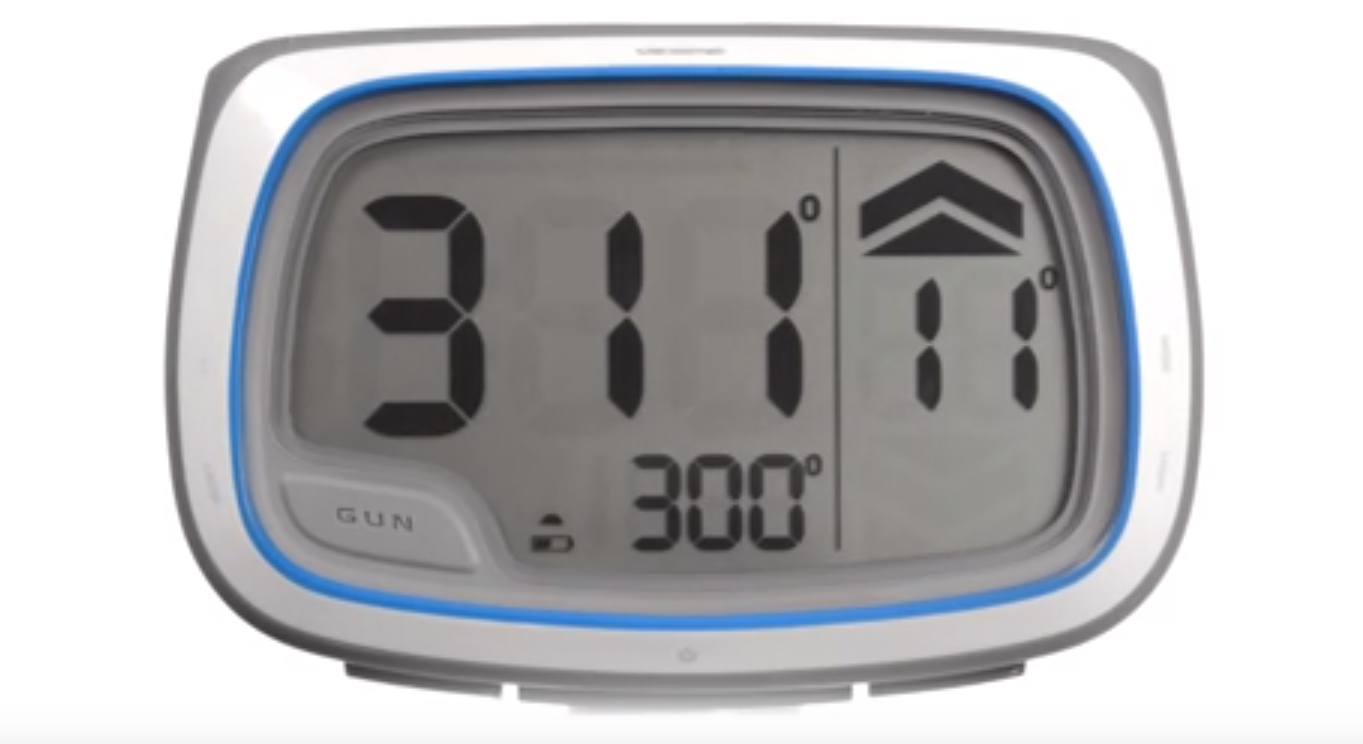
Velocitek Shift: Reviews, Calibration Procedure, Bracket Issues
Leave a comment cancel reply.
You must be logged in to post a comment.
This site uses Akismet to reduce spam. Learn how your comment data is processed .

Best Sailing Racing Compasses

Key Takeaways
- A boat compass is ideal for any sailor out on the water in the event that you become lost
- Calibrating a compass is not difficult but you should consult with the manual beforehand
- A boat compass can damage over time so be sure to check reviews for good ones
- Some sailing compass brands come with brackets while others have various options
- It is important to understand how it works before attempting to purchase one
A sailing racing compass is an important tool in sail races and on the water in general. But what are the best sailing racing compasses?
The best sailing compasses for racing would be TurnOnSport, Plastimo, Ritchie Navigator, and Detuck. Sailing compasses vary in mounted types or handhelds. You can find a perfect compass for racing since there are plenty of options to consider.
Base on my previous experience a lot of marine compasses vary in style and their intended use so each brand will cater to a certain sailor. Depending on the type of boat and racing you are conducting then the type of boat compass will likely differ.
Table of contents
10 Best Sailing Compasses for Racing
Sailors need a trustworthy boat compass for a variety of reasons but especially in racing. There are many different types of sailing compasses that could work for you based on your budget and desired sailing goals.
TurnOnSport Boat Compass

If you have never used a boat compass before you will be pleased with the quality of TurnOnSport’s boat compass. It can stick or be mounted virtually anywhere but is ideally meant for marine use. It is corrosion resistant and it comes with a shield to block out sunlight.
- 12V power supply to light up
- Magnetic and easy to install
- Might not be sticky enough to stay in place
- Needs a flat surface when trying to stick
Plastimo Contest 130

Plastimo offers an easy to read boat compass that can be seen from just about any angle. You do not have to worry about it getting beat up since the dome is scratch resistant and is also UV protected. It is ideal for boats over 30 feet but can still accommodate smaller ones.
- Scratch resistant
- Easy to read with a crystal clear display
- Can fit to bulkheads
- Might be difficult to find at times
- Higher price point
Ritchie Navigator BN 202

Ritchie Navigator makes an excellent compass like the BN 202 for example. It is proven to withstand a variety of sailing conditions and is arguably one of the best designs among sailing compasses. It is also equipped with an inclinometer to help with steering and windward.
- Comes with night light so that you can travel long distances overnight
- Inclinometer to help with steering
- Five year warranty
- Might be an expensive compared to other brands
- Slightly larger than other compasses
Boat Compass by Detuck

Detuck enters the boat compass game with a cost-effective alternative to other major boat brands. At just under $20 you can have a good quality tactical compass without having to break the bank. It also arrives with a magnetic declination capability so that you can improve the compass accuracy over time.
- Has magnetic declination to be more accurate
- Comes with a money back guarantee
- Backlight enables you to see in multiple lighting conditions
- Cannot be left in the sun for too long
- Plastic might not hold up in rough conditions

Lewmar has a few options for racers trying to find a top quality compass in their boat. Their 135 model comes with a hood that helps protect it from sunlight. It also has a sapphire jewel pivot to allow you to read it from any angle clearly.
- Two different options to mount it
- Ideal for larger sailboats that use 24 volts
- Easy to read compass card
- Might take a while to get it
COSTIN Compass

Costin is one of the best marine compasses out there for the price point. This is a great tactical compass that can also be used in marine conditions which is perfect for sail racing. It is easy to carry and store when not in use.
- Rugged and sturdy even if dropped
- Less than $16
- Comes with pouch for easy carrying
- Might not be the most accurate
- Instructions can be difficult to understand
100BC Compass by Silva

Silva might have the sleekest and smooth design for a sailboat compass. It can be mounted in a variety of positions and read from nearly any angle. It also has illumination capabilities so that you can see it in dark environments.
- Multiple mounting options
- Has protected cover
- Easy to read no matter the angle
- Price might be a little high for some
- No angle for heeling
Clipper Compass

The Clipper compass system is an electric tool that helps with direction. It has seven different levels of lighting so that you can see in all light conditions. It also has an alarm that will go off if you stray off your preset course.
- Various lighting options to read in any condition
- Easy to read
- Alarm to help you stay on course
- Need to keep on battery supply
- Cannot see it in some angles
Odowalker Marine Compass

Odowalker is another entry level compass that you can use for a variety of applications. It comes with an incandescent light to help you see in dark conditions and is easy to read. It is also made out of ABS material and can withstand some shock.
- Adjustable to see from various angles
- Multiple uses outside of sail racing
- Need power supply in order to use backlight feature
- Might need to adjust accuracy when it arrives
Autonautic Deck Mount Compass

The Autonautic CHE-0074 model provides accurate directions on larger boats. It is designed to allow more graduations so that you can see the numbers better. It is also one of the more durable and reliable boat compasses.
- Fairly expensive but has five year warranty
- Has graduation markings to see better
- Best for a steel boat
- Fairly expensive
- Meant for a larger boat
What to Look for in a Sailing Compass
There are various factors you should take into consideration when attempting to buy a sailing compass. You would likely want to read user reviews and potentially test one out yourself to get a feel for what you need.
In addition you should also narrow down your sailing goals to determine what is going to work best for your situation. Buying a sailing compass simply because you think it looks cool is not going to help your situation out on the water.
Size of the Compass
In my experience you should aim for a sailing compass that has a large diameter. It needs to be able to fit properly onto your dashboard at the helm so that you have and easier time reading it.
If it is large enough you can read the numbers easier when the boat is in rough conditions. It does not necessarily have to have a backlight but that would help especially at night.
Various Mounting Options
Depending on the type of boat and the sailing compass you choose it might have different options for mounting it. Various mounting options exist for those that want to mount it a certain way.
Space on the Dashboard
This installation is simply on the dash of your boat if applicable. You will need to cut out and fit a section of the dash in order to keep it secure and it makes it permanent.
Flat Surface Areas
Installing on the surface is likely the easiest and quickest since you can simply place it and be done. A surface mount can either be flat somewhere at the helm or horizontally at the best spot. This also prevents you from having to cut out a section of the dash.
Using Brackets
If your sailing compass comes with brackets this will allow you to place anywhere you desire with some installation required. A bracket mount will typically allow you to move the compass slightly to get a better read and is ideal for placing in vertical spots.
Mounting it Flush
A flush mount installation is where you cut a hole in your dash and expose just enough of the compass to read it. Some sailing compasses are more attractive looking when you install it this way but it does take a little more time than standard surface installations.
Binnacle Mounting
Choosing a binnacle mount is another option that is referred to as a “little house” for the compass. This helps keep it out of the elements or sunlight and are typically larger.
A majority of the sailing compasses you see on the market have a backlight and it is a handy feature if you are in lower light conditions. You will likely need to have it close to a power supply for a lot of these but some come equipped with a slight illumination already to make it easier to read.
Various Types of Dials
There are a few dial options to consider when selecting your sailing compass. Each one could appeal to you based on the way you prefer to read it.
Direct Dial for Upright View
A direct dial has the lubber line in an aft position and are best suited for helms that are closer to eye level when sailing. It is recommended that you have plenty of experience reading this type of dial since it requires some knowledge beforehand.
Dial with Flat Card
A flat card dial has to be read while you are standing or sitting in a seat above the helm since it features a horizontal face. The lubber line is forward so you would need to have the right angle when looking at it.
Hybrid dials are likely what you are thinking which is a mix between direct and flat. These allow you to read the compass from nearly any direction. These are best if you are needing to see the direction from any part of the boat and if you are newer to reading a compass.
Your Knowledge
If you have never used a compass before it will likely take a slight learning curve to get used to it. Consider purchasing one that you can either read from any direction or has simple but precise markers in order to get an accurate reading. Sailors that have plenty of experience might be able to read any compass no matter the quality.
How Does a Sailing Compass Work?
A compass is an essential tool for your boat to help guide you safely during any event at sea. This is especially important because if your power fails on your boat you can use your compass to help navigate back to safety.
How it Operates
Beneath the compass card is a tiny magnet that keeps north and south in line with the help of the Earth’s magnetic field. The compass is encapsulated with a fluid to help keep it stable upon moving on the boat. These are typically an analogue compass but some digital ones do exist usually as a handheld version.
Deviation Process
Deviation is a term used to describe when a compass is thrown off of its accurate reading due to other magnetic influences or too much metal interfering with it. You will need to read the manual or check with a qualified professional to help get it back in check.
Various Styles
Your boat will likely need a specific compass to make it worth the investment. As mentioned a binnacle compass is best for when the view is above and it is likely mounted on the wheel.
Smaller boats that utilize tiller steering are best suited with bulkhead mount that are located at the front of the cockpit. These also generally help with determining the angle of the heel the boat is experiencing.
In other words you should conduct the proper amount of research to best fit your needs. Your budget and boat type will play a crucial role in determining the best one. Your sailing experience can also make an impact on the buying process to help find the best tactical scale on the water.
Related Articles
Daniel Wade
I've personally had thousands of questions about sailing and sailboats over the years. As I learn and experience sailing, and the community, I share the answers that work and make sense to me, here on Life of Sailing.
by this author
Personal Health and Gear
Most Recent

Best Sailing Duffle Bags: Top Picks For Boat Travel
September 27, 2023

Best Sailing Racing Electronics
July 5, 2023
Important Legal Info
Lifeofsailing.com is a participant in the Amazon Services LLC Associates Program, an affiliate advertising program designed to provide a means for sites to earn advertising fees by advertising and linking to Amazon. This site also participates in other affiliate programs and is compensated for referring traffic and business to these companies.
Similar Posts

Best Boating Watches For The Avid Sailor
May 1, 2023

Best First Aid Kits For Boat Safety
April 18, 2023

Who Has To Wear A Life Jacket On A Boat?
April 10, 2023
Popular Posts

Best Liveaboard Catamaran Sailboats
December 28, 2023

Can a Novice Sail Around the World?
Elizabeth O'Malley
June 15, 2022

4 Best Electric Outboard Motors

How Long Did It Take The Vikings To Sail To England?

10 Best Sailboat Brands (And Why)
December 20, 2023

7 Best Places To Liveaboard A Sailboat
Get the best sailing content.
Top Rated Posts
© 2024 Life of Sailing Email: [email protected] Address: 11816 Inwood Rd #3024 Dallas, TX 75244 Disclaimer Privacy Policy
- Specifications
The ultimate Race Compass
The race compass offers unprecedented ergonomics and visibility..
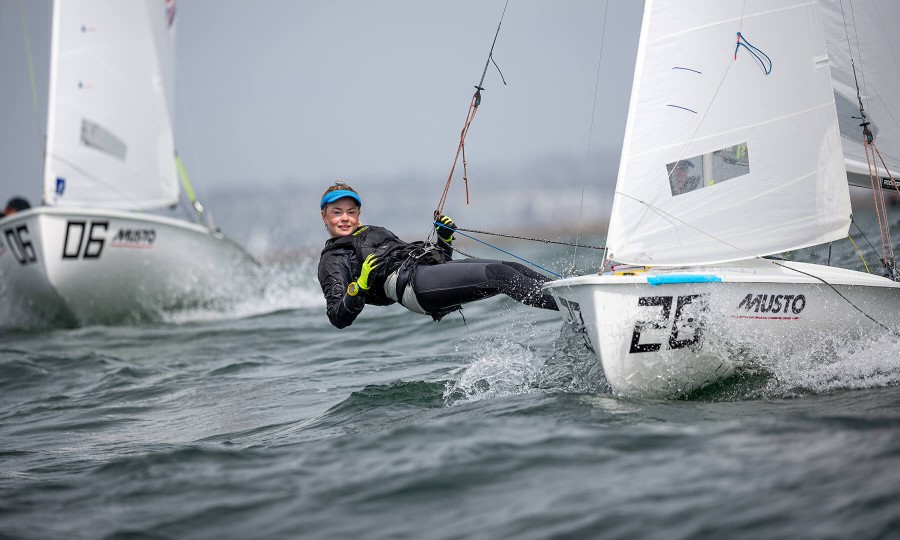
Two-line display
With the two-line display, there is no need to compromise:
Before the start:
With the countdown and the tactical display in view, be on time and be at the favoured end.
After the start:
With the tactical display and heading in view, play the shifts and find the marks.
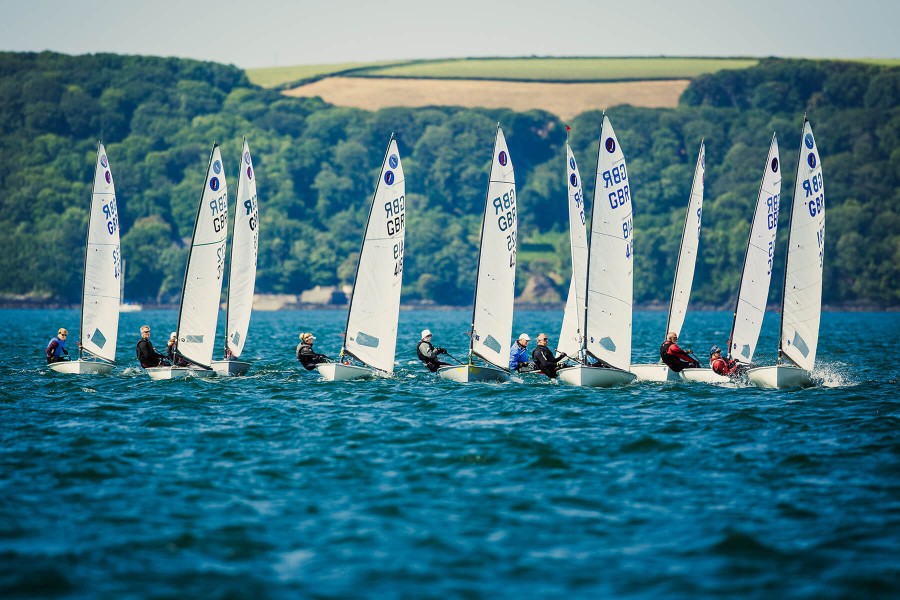

Three-button countdown
The countdown is pure simplicity: the GO button starts the countdown and you can adjust the minutes with the left and right buttons even whilst the countdown is running.
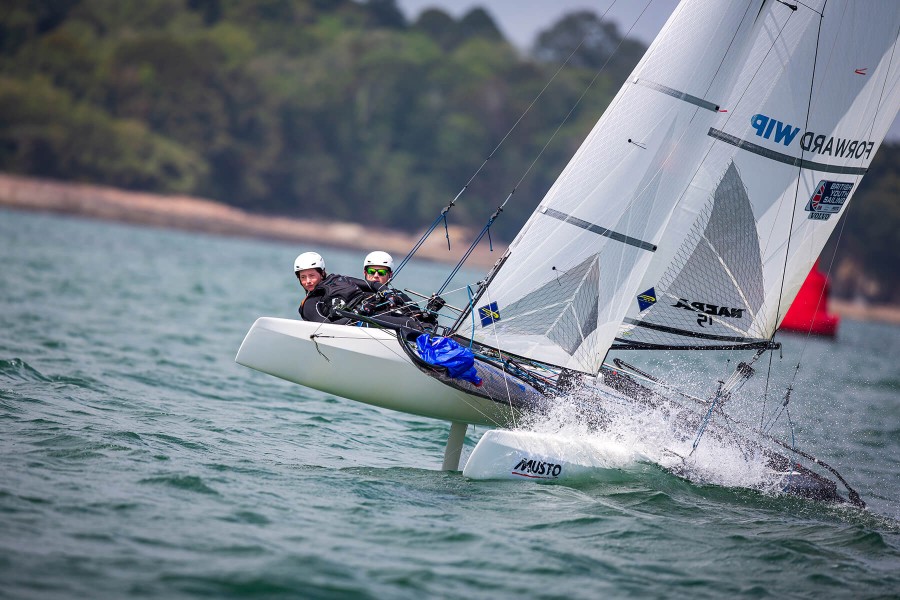
Easy to read
The super-bold 30mm characters are easy to read and the twin displays ensure a clear view even from a hiking or trapezing position. The displays are built with a circular polarizer which ensures full compatibility with polaroid sunglasses from all view angles and directions.
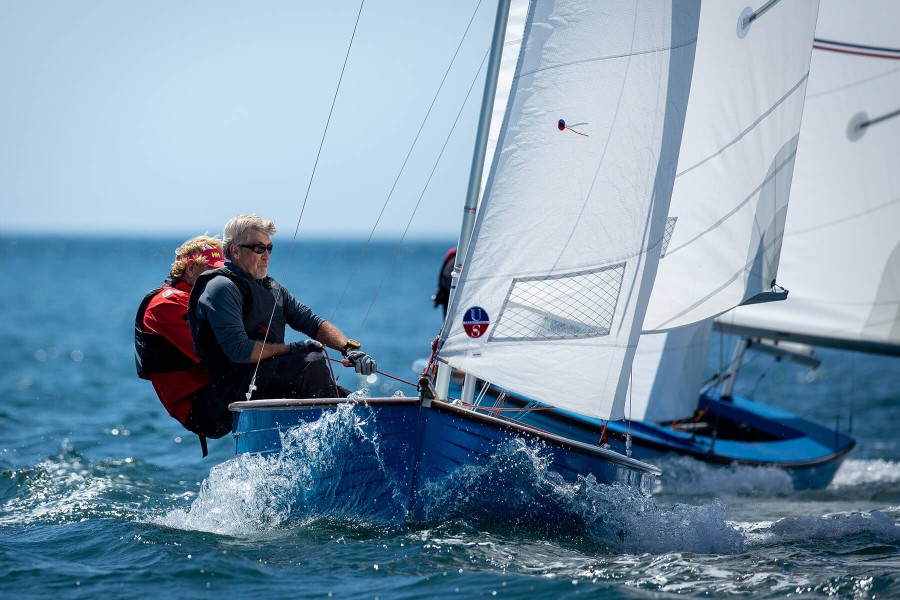
Designed for sailboat racing
Built with a one part toughened transparent front case, the Race Compass is fully waterproof. With the two-line display and time-of-day clock, you don’t have to carry a separate watch or timing device. The Race Compass is powered for life with its integrated sky-facing solar panel.
Light weight

check_circle
- Yachting World
- Digital Edition

Velocitek Shift tactical compass
- March 23, 2015
Who’s it for? Racing sailors, from tacticians on crewed race yachts to sportsboat and dinghy racers. Tested by solo racer Henry Bomby

Velocitek Shift
Product Overview
Overall rating:.
- • Robust, chunky unit with solar panel on top
- • Large backlit digits
- • Remembers upwind reference angles to calculate windshifts
- • Useful start countdown feature
- • Can be a bit distracting
- • Expensive
- • Not allowed in some classes
Manufacturer:
Price as reviewed:.
The Velocitek Shift is an interesting new product that can help make the decision about when best to tack. It uses changes in compass heading to let you know if you are headed or lifted. A bit like using a machine to count cards in a game of blackjack, this saves mental calculations or the need to write numbers down on the deck or in your wet notes.
See the official video
It is designed to help make the often-complex job of a tactician that little bit easier. It does require a bit of set-up time, but crucially once you are up and running all you have to do is glance at the display during racing to access all the windshift information you need.
The Shift uses a nine-axis solid-state sensor to provide three-dimensional orientation for the boat and produce responsive compass numbers. It is a robust, standalone display, with chunky buttons and large, backlit digits, which is available with several mounting options.
I found that the Shift gave me the confidence to take smaller gains and cut my losses earlier. And it really comes into its own when you are distracted by other things and aren’t fully concentrating on tracking the wind – which can often happen when sailing a Figaro solo!
On windier days, for example, when it can be easy to forget the numbers because getting round the course and executing manoeuvres is much more of a priority, I found having the Shift to inform me of a lift or header on an easily viewed display a huge bonus.
I did find the device a bit of a distraction at first, but if you and your crew get used to racing with a Shift week-in week-out I believe it would become highly valuable. The set-up process alone is helpful, as it requires you to sail upwind for a few minutes on each tack to evaluate mean upwind compass headings. And the start countdown is a useful additional feature.
The Shift is not cheap, and for keelboat or dinghy sailors it could be a cost too far. But for a crewed yacht with a dedicated tactician on board, it is definitely something I’d recommend.
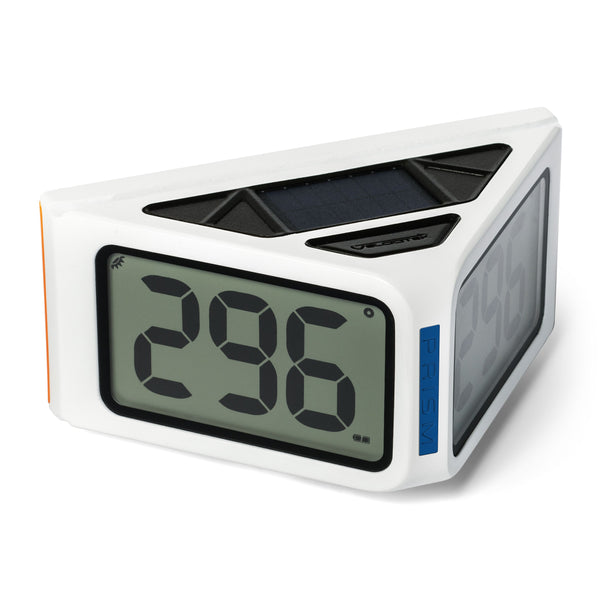
Regular price $579
The updated Prism. The Prism is a stripped down racing compass. Class legal anywhere an electronic compass is legal, the Prism provides superior accuracy, and a massive display all in an ultralight, compact package.
What’s Included:
- Velocitek Prism
- Mounting cradle
- USB charging cable
- EVA storage case
The Prism is manufactured in San Mateo, California.
The Prism is in stock. Individual Prism orders will ship within 1 business day.
Accessories
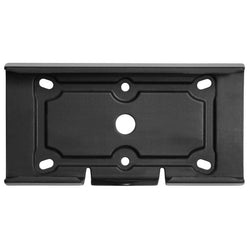
- 4.8oz / 137 g
- Heading Repeatability: ±0.5°
- Display Update Rate: 4Hz (four times a second)
- Sensor Sampling Rate: 44Hz (forty-four times a second)
- Water Resistance: Complete immersion for 30 min. at 3m / 10ft (IPX8)
- Display: 29.8mm / 1.1” digit height 250° viewing cone
- Battery: 600mA
- Warranty: Two years
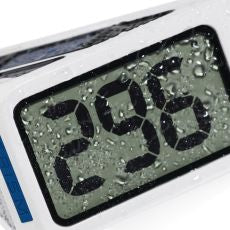
The Prism is an indispensable tool on our Etchells. From the helm, the digits are large and easy to read. The compass heading is accurate and precise, which allows us to capitalize on each and every shift. Steve Benjamin - Olympic Silver Medalist, Multiple World Champion, US Rolex Yachtsman of the Year
The Prism's digits are large enough for everyone on the Etchells team to read easily and it’s so light that it was also an obvious choice for the 470. The Prism is easy to read - at a glance - from the wire on the 470 and that is a huge competitive advantage at the international level where every detail counts. Dave Hughes - Olympian (US Mens 470 Crew), Multiple World Champion, US Sailing Team Member
The Prism was really awesome to have onboard. In breezy conditions it can be hard to read a compass you’re low on the wire, but it wasn't hard to read the Prism. In some really tough conditions the compass kept up with our changes in angles and always gave us a reading we could rely on. Stephanie Roble - 49erFX skipper, US Sailing Team Member, 2 x US Women’s Match Racing Champion, US Sailing Rolex Yachtswoman of the Year
I’ve been really impressed by this compass for two main reasons: One, the accuracy; when we turn it reflects it right away. Two, it's a really large display that's easy to see from the trapeze and everywhere else on the boat. It has the information where I want it, when I want it. Helena Scutt - Olympian (49erFX Crew), Nacra 17 Crew, US Sailing Team Member
Is the Prism GPS based?
No. The Prism is strictly a magnetic compass.
Does the Prism have a timer?
No. The Prism does not have a timer. We wanted to make the easiest electronic compass to use and the input we received from pros and Olympians in developing the Prism was that a timer was OK to leave out for two reasons. 1) Most sailors wear a watch or mount one on the mast or boom. 2) Having to switch from timer to compass and back to timer in pre-start to take a wind shot is really inconvenient on a boat with 1 - 3 crew.
Does the Prism have a backlight?
No. The Prism does not have a backlight.

- Manuals - Tech Info
- Nautos PDF Catalog
- (954)369 1842
- [email protected]
Shopping Cart
Welcome to Nautos-usa !
PRISM - stripped down racing compass - Velocitek

Product Description
The Prism is a stripped down racing compass. Class legal anywhere an electronic compass is legal, the Prism provides superior accuracy, and a massive display all in an ultralight, compact package.
What’s Included:
- Velocitek Prism
- Mounting cradle
- Quick Start Guide
- EVA storage case
- 4.8oz / 137 g
- Heading Repeatability: ±0.5°
- Display Update Rate: 4Hz (four times a second)
- Water Resistance: Complete immersion for 30 min. at 3m / 10ft (IPX8)
- Display: 29.8mm / 1.1” digit height 250° viewing cone
- Battery: 600mA
- Warranty: 2 years
COMING SOON! PRE-ORDER THIS ITEM. SHIP DATE: APRIL 2018
- Tags : Prim racing compass - velocitek
Related Products
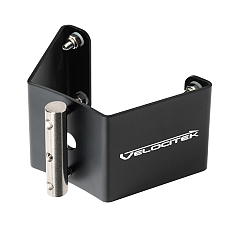
Prostart - Mast Bracket - Velocitek
tactical compass Prostart bracket
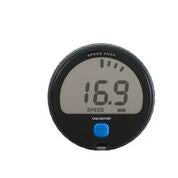
SPEEDPUCK - GPS speedometer - Velocitek
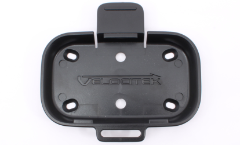
Prostart - Cradle - Velocitek
tactical compass Prostart cradle
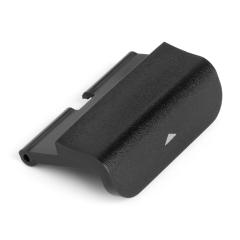
Prostart - Battery Compartment Clip- Velocitek
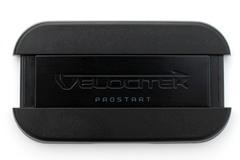
Prostart - Battery Compartment LID- Velocitek
Prostart Battery Compartment LID
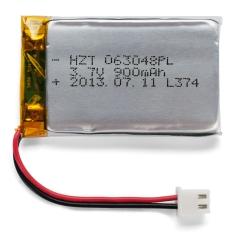
SHIFT - Battery Replacement - Velocitek
Shift replacement battery
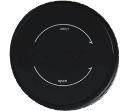
SPEEDPUCK BATTERY COMPARTMENT LID - Velocitek
Battery compartment
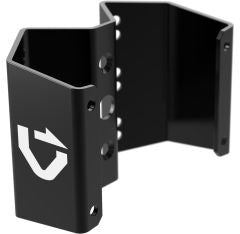
Lash Bracket- Velocitek
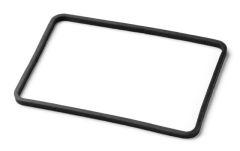
Prostart - Battery Compartment Gasket- Velocitek
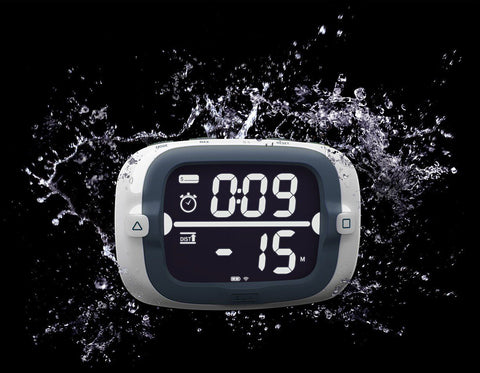
ProStart - Velocitek - New model
tactical compass
SHIFT - Mast Bracket Replacement Hardware - Velocitek
Shift Replacement Hardware - Velocitek
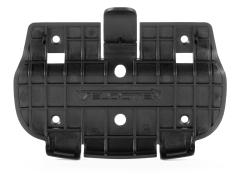
SHIFT Cradle - Velocitek
Shift cradle - Velocitek
- Technical Information
- Buyer Protection Plan
- Terms & Conditions
- Nautos Policy Orders
- Nautos Warranty
- Do not sell or share my personal information

THE FINAL BEAT
Sail faster, quicker, sailing compasses for dinghy racing.
- A Simple Guide to Choosing Sailing Compasses
List of Sailing Compasses for Dinghy Sailors
- Books with Information on Using Sailing Compasses
Guide to Choosing Sailing Compasses
Choosing a sailing compass can be tricky if you haven’t used one before. It is difficult to be sure what style will suit you best, and what features will be most useful for your class.
That said, it actually isn’t something to get too hung up about. Most of the sailing compasses listed below will suit anyone with a little practice and a good basic understanding of how to use them. The most important thing when choosing between the sailing compasses on offer is to understand the features they have and how these suit your needs.
Here are some of the features to look out for:
A tactical scale – All of the analogue sailing compasses listed here have a tactical scale. It is so much easier to use a compass for tactical reasons if you are working off a simple scale rather than the 360°. Other similar compasses might be cheaper, but if you’re going for an analogue compass then a tactical scale is pretty essential.
Class legality – Your compass must be class legal, or you’re wasting your money. Check out which compasses are allowed, and have a look at what sailing compasses the guys at the front of the fleet are using.
Weight – It is easy to overplay the importance of weight. a few grams here or there are unlikely to cost most sailors positions unless you’re sailing at the highest level. In an ideal world you’d get the lightest compass with the least windage, but don’t over-think it – it shouldn’t be a deal breaker, but it could be a factor that tips you more one way than the other.
Raymarine T060 Micro Compass

This is a hugely popular sailing compass, and you’ll see it widely used by dinghy sailors in a number of fleets. Light, compact and simple to use it is ideal for most sailors and, as it doesn’t have lots of tactical extras, it is class legal for most dinghies.
United States
UK & Ireland
Nautalytics Simple Compass Laser Set

A superb compass for Laser sailors. Lightweight and easy to use, this compass has a couple of extra features that make it well worth considering. The display panel has AWV (All Weather Vision), meaning that it is designed to be easy to read even when wearing polarized sunglasses – an incredibly useful feature for dinghy sailors.
It also has a small solar cell for battery back-up, keeping it topped up with power so it won’t run out of battery when you need it most.
A really useful bit of kit for Laser racers.
United States UK & Ireland
Velocitek Shift Tactical Compass

A very clever piece of kit, the Velocitek Shift tactical compass makes picking shifts a whole lot easier. The large numbers appear in high contrast, making them easily legible even when wearing polarized sunglasses, whilst the large buttons mean it is easy to use even when the breeze is up.
Even though it doesn’t use GPS technology, you need to check the most recent class rules if you’re sailing a strict one design as the shift detection technology may not be allowed. The compass does come with a static-cling label to cover the wind-shift indicator, but if you are intending to sail in major championships it is essential that you check you are allowed to use this compass.
Velocitek Prism Ultralight Racing Compass

Features include:
- Large digits – The display features large numbers in an easy-to-read font that is sunlight-readable.
- Wide Viewing Angle – the prism design means that the compass can be read easily when hiking out
- Flexible and Secure Mounting – mount it to your boat or the mast with a range of flexible fittings
- Class legal – legal in a wide range of dinghy classes, including some of the strictest.
- Solar Powered – Battery powered with solar charging
Find out more here
CarbonParts Laser Compass

Designed in conjunction with multiple-Olympian Phillip Buhl, the CarbonPArts LAser compass is lightweight and small. It features a clever variation on the tactical scale, utilising a multicolour system to make it even easier to remember your numbers, helping you to spot shifts quickly, accurately and easily.
Find out more here .
Carbon Parts Opti Compass

Class legal and developed specifically with Optimist sailors in mind (and in conjunction with the Norwegian Optimist team), this is ideal for competitive racers.
Find out more here .
Nautos Iris 100 Tactical Compass by Plastimo

I used an earlier version of this as an Optimist sailor, and it is a very useful little sailing compass. Using a simple click-bracket it can be moved from boat to boat very easily. It is small and relatively lightweight, making it ideal for small dinghies, and the price is great when compared with other tactical compasses.
Ideal for small dinghies or as a first tactical compass.
Ritchie Compass X-Port Tactician Compass (Xp-98W)

Relatively cheap compared to other tactical compasses, the online reviews of this are pretty good. I have no experience with this compass, but it has all the basic features that you might want from a tactical compass.
Nexus Garmin (Silva) Racing Elite Sailing Compass
This is an excellent compass for dinghies, and you see a lot of Laser sailors use it. The tactical scale makes it very easy to use, and I personally have had one for years without any issues at all. A very safe bet if you’re unsure what to go for.
Books with information on using Sailing Compasses

Ben Tan – Complete Introduction to Laser Racing , page 19
Dick Tillman – Complete Book of Laser Sailing , page 34

Forgot Password?
Thumbnail Filmstrip of Silva 103RE Racing Elite Compass Images
Sku: 103re silva 103re racing elite compass.
- Description

- Forums New posts Unanswered threads Register Top Posts Email
- What's new New posts New Posts (legacy) Latest activity New media
- Media New media New comments
- Boat Info Downloads Weekly Quiz Topic FAQ 10000boatnames.com
- Classifieds Sell Your Boat Used Gear for Sale
- Parts General Marine Parts Hunter Beneteau Catalina MacGregor Oday
- Help Terms of Use Monday Mail Subscribe Monday Mail Unsubscribe
Tactical Compass Compared
- Thread starter Jackdaw
- Start date Jan 22, 2014
- Forums for All Owners
- Ask All Sailors
We spent most of last year going back and forth on what tactical compass to use on our boats while racing and cruising. If anyone is interested, I've written up the comparison here: http://rarerarebird.blogspot.com/2014/01/tactical-compass-compared.html
I'm thinking one of these things could eliminate A LOT of arguments about when to tack. The mythical lift being so elusive.
Good article, Jack. Thanks
Gunni said: I'm thinking one of these things could eliminate A LOT of arguments about when to tack. The mythical lift being so elusive. Click to expand
You are way advanced. I usually have to settle for a driver that simply steers to our trim. The worst are the guys who go off course and then try to sell me on "the wind shifted" BS. 2 demerits and denial of beer.
Gunni said: You are way advanced. I usually have to settle for a driver that simply steers to our trim. The worst are the guys who go off course and then try to sell me on "the wind shifted" BS. 2 demerits and denial of beer. Click to expand
Jackdaw said: Denial of beer??? You are WAY too hardcore. ;^) Click to expand
- This site uses cookies to help personalise content, tailor your experience and to keep you logged in if you register. By continuing to use this site, you are consenting to our use of cookies. Accept Learn more…

For 89 years, we at Silva have manufactured compasses for orienteering, outdoor life, adventure and boating. With our quality compasses, you get precise and fast navigation on land or at sea, day or night. Constantly developing and improving our compasses to become the best on the market is something we have worked with since the beginning in 1933.
Orientation compasses for fast and precise navigation
Our range of orienteering compasses ranges from beginner compasses for children and adults, to compasses used by elite orienteers. Here you will find wrist compasses for children and ruler compasses that can be used both for orientation and hiking. Our rotary capsule thumb compasses have the highest performance and are developed by elite orienteers. You'll also find classic Silva orientation controls and orientation markers.
Boat compasses and marine compasses
Are you looking for sailboat compasses, motorboat compasses or compasses for kayaks? Here you will find sailboat compasses for bulkhead mounting, front-reading boat compasses, flush-mounted compasses, pedestal compasses for sailors and motorboat compasses that can handle high speeds. Most of our marine compasses have high heeling angles, dual scale, three ruler lines and built-in lighting for night navigation. We also have kayak compasses that you attach with rubber bands, universal compasses that can be used both as steering compasses and hand-held bearing compasses and inclinometers.
Compasses outdoor and outdoor life
Find a compass for outdoor life and adventure. Among our beginner compasses you will find classic standard compasses with a rotatable compass housing and entry-level compasses that meet the requirements for training in schools, youth groups and leisure orienteering. Here you will also find adventure and expedition compasses such as our aiming compasses with global needle, magnifying glass and slope card to detect avalanche risk.
Quality compasses since 1933
Already in 1933, the Kjellström brothers, Silva's founders, invented the first liquid-filled compass that revolutionized navigation and became a global standard. Namely, the liquid created a resistance that prevented the needle from spinning. Now you could read the compass in just 4 seconds, compared to the previous 30. Ever since then, we have developed and improved our compasses to be as fast and precise as possible.
Are you in the right place
Please select your store

All About Geographic Information Systems
Choose the Best Wrist Compass to Make Sure You Do Not Get Lost in the Scary Dark Forest
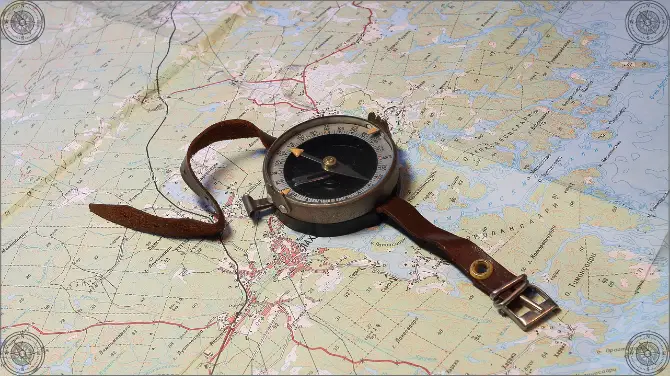
If you are planning to go hiking or mountain biking in a national park having a wrist compass is an absolute must, especially if you are not familiar with the area and are relying on maps to find your way around. It is very easy to get lost on trials.
National Geographic says that the compass was invented in China over 2,000 years ago.
I researched more than 60 products and found seven that I really like, plus three more that almost made the list of the top choices. These compass choices are also good, just not as good as others on my review list:
- VGEBY1 Wrist Compass
- Aqua Lung Wrist Compass
- AOFAR AF-Q60
A wrist compass can be very handy if it is rugged and strapped on for trekking over rigorous terrain, especially if you are a paratrooper. Bryan Suits found one in an antique store that dates back to 1944 that he repaired. Modern ones are sleeker but basically have the same function of helping someone keep from getting lost.
I found a WW2 paratrooper wrist compass in a Tehachapi antique store last year. I’m cleaning it and refilling it with mineral oil this morning and sure enough, SEP 1944 manufacture. Rochester, NY. (Unlikely that it was at Oper. Market-Garden. Prolly unissued. (New strap) pic.twitter.com/BcZOBBpfXZ — Bryan Suits (@darksecretplace) January 19, 2020
After reading this article, you will know how to select and use a compass, so you can choose the best wrist compass that suits your needs, including understanding the important details about the following:
The best wrist compass has a lot of competition for the top spot. There were many dozens of choices. I narrowed them down to just seven and picked my favorite as the top pick, with two others as also good choices. I once was saved by my wrist compass when hiking when I got completely lost in a sudden snowstorm.
The snow-covered all the reference points that I could have used. My battery in my GPS locator also went dead when the unit got wet, and I did not carry a replacement battery with me. Without a solid wrist compass to guide me back, I might still be lost in the snow and would not be able to write this review.
My Top Pick
What’s Inside?
- Rugged design
- Balanced for the northern hemisphere
- Made in Finland
- Velcro wrist strap
- No batteries required
Killer Feature: The style is popular and it is comfortable to wear
Buying Options
- Suunto website →
This compass is my favorite because it is not complex, it is modestly priced (less than $25), and it gets the job done.
Also Great
Suunto sk-8.
- Available for both northern and southern hemisphere use
- High-quality dive compass
- Easy-to-read with a phosphorescent compass card
- Multiple attachment styles
Killer Feature: The firm-grip bezel has a ratchet at every five degrees
The Suunto company is known for its ultra-durable compasses made with advanced engineering that are simple to use.
Sun Company ArmArmour 1
- Rugged tactical strap
- Luminous compass that is easy to read in low light conditions
- Rugged ABS housing
- Protective hinged cover
- Hardware is brushed stainless steel
Killer Feature: Comes with an adjustable strap that fits most adults and children
- Sun Company website →
This compass is my favorite bargain choice for under $20.
Buyer’s Guide
The buyer’s guide contains the steps to help you choose the best wrist compass for your needs.
Point 1: Durability
A well-built compass will last a very long time as long as it is not near any magnets. Single Track World readers say that keeping a compass near a mobile phone can ruin it, so be careful about putting a compass in your pocket or bag next to a mobile phone.
You want to make sure the case is strong enough to withstand any bumps while wearing it on your wrist. The compass mustn’t easily break when dropped. If you take care of your compass, it may provide many decades of useful service.
Some compasses used by the military may become collectible items .
Scott Kerr found a vintage Silva ‘Globe Trotter’ wrist compass with a new wrist strap.
Vintage Silva ‘Globe Trotter’ wrist compass, dating from the mid 20th century. “According to my watch, it’s half-past 45° NE” pic.twitter.com/wuoDEH4zEm — Scott Kerr (@scott_kerr) June 19, 2021
Point 2: Compass Accuracy
You want to make sure your compass gives accurate readings and that you know how to use it properly.
Did you know that magnetic north and true north are different? And, the difference varies depending on the area? Maps align to true north. American Hiking describes the process of adjusting a compass using declination to set the true north direction as an offset from the magnetic north that depends on where you are.
Tips from Section Hiker tell us that you should find the proper magnetic declination , before you start a hiking trip. Also, you should know that local attraction to iron or nickel metal deposits in the land, high-voltage power lines, metal automobile bodies, and large flashlight batteries will influence a compass too.
People who do not know how to set the declination and rely on inaccurate compass readings can easily get lost.
Point 3: Waterproof
If you use a compass for diving or in wet conditions, you want to make sure it is waterproof. Waterproofing is critical for diving, which is different than being water-resistant. Be sure to check the rating of any compass you consider for the waterproofing at the depth you plan to dive.
A wrist compass has come a long way since the 1970s with many modern improvements.
Wrist compass, USSR, 1970s pic.twitter.com/ns7ZlYflp5 — Soviet Visuals (@sovietvisuals) April 24, 2019
This quick list describes the killer feature of each candidate for the best wrist compass to help you narrow down your choices rapidly, and then you can read the in-depth reviews of those you like.
| The Suunto company has an authentic heritage and was founded in 1936.
| ||
| The firm-grip bezel has a ratchet at every five degrees.
| ||
| Comes with an adjustable strap that fits most adults and children.
| ||
| This compass works for deep diving with a maximum depth of 80 meters. | ||
| This compass is shockproof and waterproof to a depth of 60 meters. | ||
| The face is luminous and divided into 10-degree intervals. | ||
| Comes with a grade-AA dial thermometer that reads down to minus 30 degrees Fahrenheit. |
A wrist compass will come in handy if you are trying to get a certification in global information systems (GIS). Get recommendations about the best GS certification programs here .
Here are the detailed reviews of the best wrist compass choices:
1. SUUNTO M-9
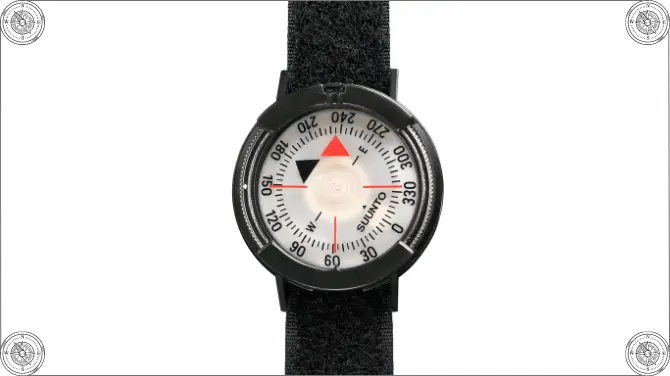
The Suunto M-9 comes with a Velcro wrist strap and is easy to read with a luminescent card. It has a rugged construction, built to take abuse. This compass, made in Finland, is waterproof and good for many outdoor activities like skiing, hiking, mountaineering, or diving.
- Made with advanced engineering and durable materials.
- No batteries are required.
- Provides accurate navigation in the northern hemisphere.
- The Suunto company was founded over 80 years ago and is known for quality craftsmanship.
- Extremely accurate.
- Must be in a level position to work properly.
- Velcro strap may be uncomfortable.
- Is challenging for some to read.
Killer Feature: The style is popular and it is comfortable to wear.
This video, produced by Henri Unzip, shows how the Suunto M-9 has a sighting notch to sight an object.
This compass also has a side window to allow a wearer to read the bearing. It has a luminescent board, and water does not affect it.
2. SUUNTO SK-8
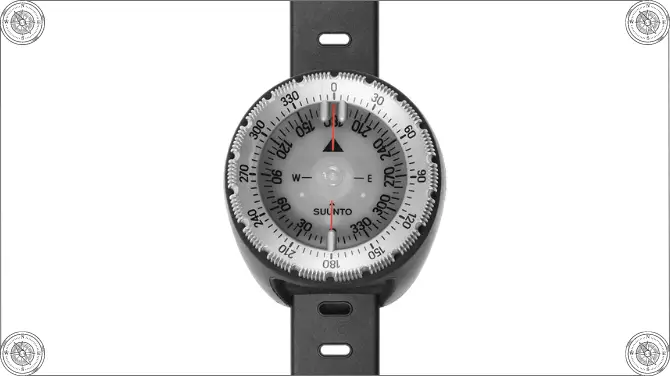
The SUUNTO SK-8 is my second choice for the best wrist compass because of all of the optional ways you can wear it or attach it to your diving gear. Suunto engineering is exceptional. After all, the company has been around for more than 80 years.
- One of the world’s most popular dive compasses.
- Easy-to-read numbers on a phosphorescent card.
- Stylish design.
- Waterproof.
- Available in both northern and southern hemisphere versions.
- All plastic construction.
- Pricey at $105.
- Occasionally, may get stuck in one position.
Killer Feature: The firm-grip bezel has a ratchet at every five degrees.
This video, produced by Simply Scuba, gives a nice review of the Suunto SK-8.
The features that the reviewer likes are the liquid-filled compass body that is waterproof and the easy-to-read face that can operate when tilted. It works better than many diving compasses.
You will need to have a reliable wrist compass if you want to learn more about GPS for geocaching. An explanation of this process is here .
3. Sun Company ArmArmour 1
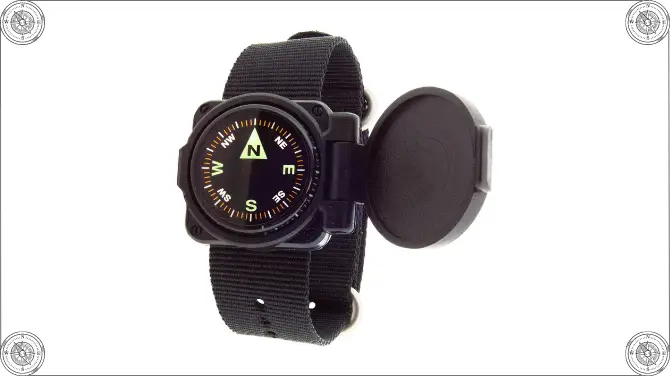
The Sun Company ArmArmour 1 has a classic design with big, easy-to-read markings and a wide Zulu strap. It has a hinged protective cover. It is my choice for a budget-minded person and sells for under $20.
- One-size-fits-all 22mm strap.
- Brushed stainless steel hardware.
- Liquid-filled luminous compass.
- Rugged ABS housing.
- Hinged cover.
- Needs to be level to work properly.
- Cover may be difficult for some to open.
- Directions for use are confusing.
Killer Feature: Comes with an adjustable strap that fits most adults and children.
This video, produced by REI, shows how to use a compass.
This video is excellent to watch if you have never set up a compass. It shows how to adjust the compass for declination. Declination is the angle difference between true north and magnetic north. Magnetic north is somewhere in northern Canada, not the north pole.
4. Scuba Choice Deluxe
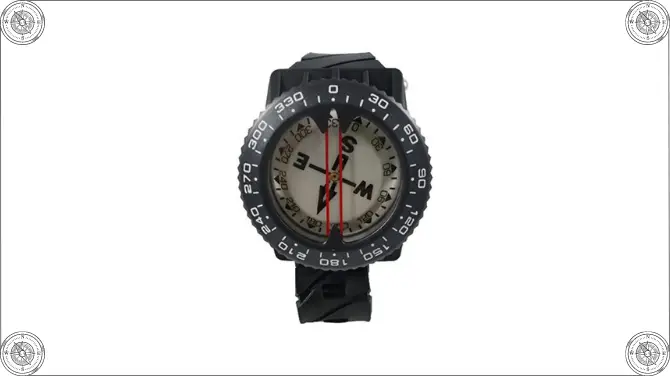
The Scuba Choice Scuba Diving Deluxe Wrist Compass is a diving compass with an easy-to-read dial underwater. It works at a 25-degree tilted angle and a depth of up to 80 meters.
- The compass diameter is a very large. It measures two and one-third inches.
- Nice contemporary design.
- Works down to minus five degrees centigrade.
- The strap wrist mount is 15 inches long.
- Good value for around $26.
- A bit bulky for use out of the water.
- May arrive with the bezel missing from the package.
- Some have trouble with accuracy.
Killer Feature: This compass works for deep diving with a maximum depth of 80 meters.
This video, produced by Simply Scuba, discusses the importance of using a compass when diving.
The best advice for using a compass is to avoid getting a bit off course and be able to find your way back to the boat. The difference between a compass used on land and one used for diving is that the card for a diving compass is round-shaped to use at an angle.
- Scuba Choice website →
5. KanPas Diving Sighting Wrist Compass
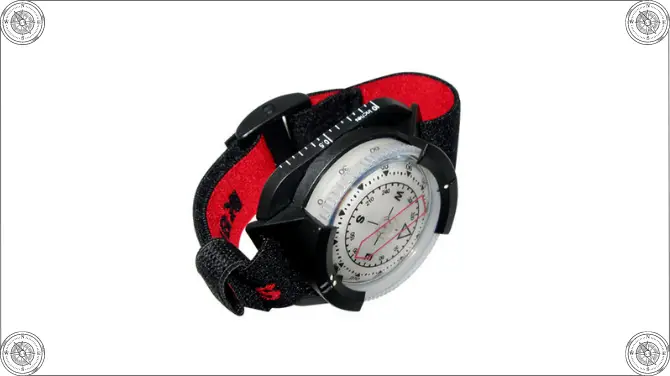
The KanPas Diving Sighting Wrist Compass has a very nice colorful design with black and red for the strap. It has a luminous display and an aiming window to use to determine which direction to go. It is comfortable to wear and looks fashionable.
- Shockproof and waterproof up to 60 meters.
- The pointer is stable in most environments.
- It can never become magnetized.
- Offered for a great price at around $18.
- Good for mountaineering and hiking.
- May get stuck in position.
- Sometimes is inaccurate if used when tilted.
- Face is too small to read while diving.
Killer Feature: This compass is shockproof and waterproof to a depth of 60 meters.
This video, produced by photofreakalvinz, teaches basic compass navigation for scuba diving.
The video shows how to rotate the bezel, how to make sure the compass card can rotate properly, and how to keep it from getting stuck.
- KanPas website →
6. Cressi Underwater Compass
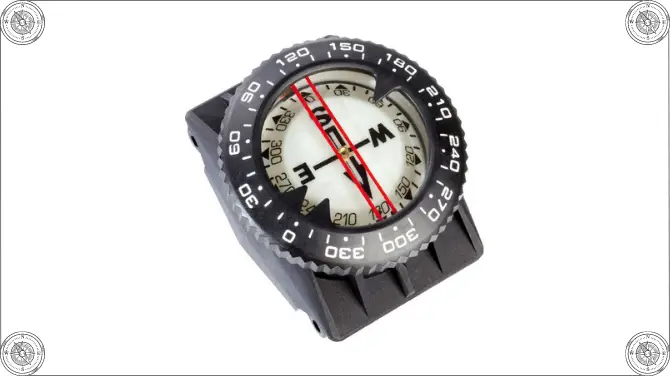
The Cressi Underwater Compass has a design created with a diver in mind. The compass face is 2.36 inches in diameter. The numbers are easy to read while underwater. The luminous face is bright when underwater too.
- Italian brand made in Taiwan.
- Has a red lubber line to help with the correct orientation
- Works even if not held perfectly level.
- Has a sighting window for taking bearings.
- Attractive and fashionable.
- Compass pointer may swing erratically.
- May stick in place if tilted.
- May give inaccurate readings.
Killer Feature: The face is luminous and divided into 10-degree intervals.
This video, produced by Greatdivers Scuba, shows how to use a compass and when to use the compass when diving.
There are three times when using a compass is useful when diving. The first is to find your way going in the correct direction. The second is if you need to head in a certain bearing direction to locate something. The third is to find your way back to the boat.
7. Sun Company ArmArmour 3
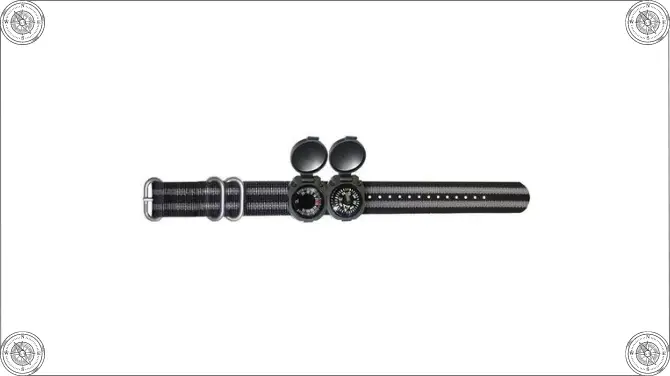
The Sun Company ArmArmour 3 is a shielded wrist compass in combination with a thermometer. There are two hinged covers to protect the devices. It comes in black and black/gray stripes. The adjustable strap fits most adults and children.
- 20mm Grade A liquid-filled compass.
- Luminous card that is easy to read in low-light conditions.
- Thermometer reads down to minus 30 degrees Fahrenheit.
- Protective hinged covers.
- Has a rugged, tactical, Zulu strap.
- Temperature gauge measures wrist temperature when worn, instead of the ambient air temperature.
- May give an inaccurate reading if tilted.
- Covers maybe difficult to open for some people.
Killer Feature: Comes with a grade-AA dial thermometer that reads down to minus 30 degrees Fahrenheit.
This video, produced by Corporals Corner, shows how to use a compass with a map.
He uses the Suunto MC-2 compass. He shows how to use the bezel ring and find bearings that can help to go in the correct direction to locate something found on a map.
Here are some accessories to use with the best wrist compass.
The Princeton Tec Quad Tactical LED Headlamp can help you navigate at night and is waterproof for the depth of up to one meter in case you find yourself lost in a swamp.
The XXL Mesh Dive Bag for Scuba or Snorkeling can help you carry all your diving accessories and is machine washable.
Rechargeable Work Lights
The T-SUN LED Work Light COB is an LED lighting system that runs on rechargeable batteries. The design is durable and waterproof.
Useful Resources
- How does a compass work? →
- How to use a compass →
- Find & improve your location’s accuracy →
- History of the compass →
Final Thoughts
When going hiking or diving, you will want to have the best wrist compass you can take along to make sure you do not get lost. It is very easy to lose your way underwater, especially if the water is murky with low visibility. Even on land, it is quite easy to get lost when in an unfamiliar area. Be sure to choose the compass that is best for your proposed trip and take it along. You will be happy to have it if you need it.
Our team members have many prestigious associations and we recommend joining the conversation with other GIS professionals who are members of the Association for Geographic Information , CaGIS , Canadian Institute of Geomatics , EUROGI , Geospatial Information and Technology Association , EUROGI , GIS Certification Institute , MAPPS , University Consortium , Urban Regional Information Systems Association and many other GIS user groups. We look forward to an expansive future of GIS systems and innovative applcations.

Save my name, email, and website in this browser for the next time I comment.

- Velocitek Instruments
Velocitek Prism
Ultralight Racing Compass. The Prism is a stripped down racing compass. The Velocitek Prism provides unprecedented accuracy, coupled with a massive display, in a compact package. At a mere 137 g (4.8 oz) it is the world's lightest racing compass. Massive digits: The Prism's sunlight-readable, high-contrast LCD screen features 29.8mm (1.1") tall digits in a font that's optimized for readability. This means that if your boat's under 40ft long you'll be able to mount the Prism Racing Compass on your mast and read it easily from anywhere in the cockpit, even if you don't have perfect vision. Ultra-wide viewing angle: With 250° of visibility the Prism's LCDs can be easily read from the helm to the trapeze wire.

Velocitek Spinnaker Pole Mounting Bracket

Velocitek Prism Deck Bracket

Velocitek Prism Lash Bracket

Velocitek Prism Cradle

Velocitek Prism Magnetic Racing Compass

Velocitek ProStart Mounting Cradle
- Print This Page
- Text Size
- Scroll To Top

Welcome to the MC Sailing Association
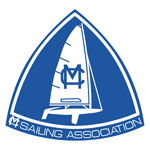
Upcoming Events
2024 regatta results.


“HISTORY OF THE SCOW” Film Proposal Woody Woodruff has been sailing scows a long time and is using his talents as a film producer to make a documentary film on scows: The Project Donate Here

© MC Sailing Association, Inc. 2024. All Rights Reserved.
- News & Trends
- Marine Electronics
- Racing sailboat tactical compass
- Novasail Ltd
- Exhibitions
Racing sailboat tactical compass 9 axis AHRS E-Compass magnetic GNSS

Characteristics
Description.
No catalogs are available for this product.
- Magnetic compass
- Navigation instrument bracket
- Electronic compass
- Sailboat navigation instrument bracket
- Magnetic tactical compass
- Tactical compass
- Mast navigation instrument bracket

IMAGES
VIDEO
COMMENTS
Step 1 Reset wind dial. Step 2 Untighten lock ring. Step 3 Set the wind direction for compass ring. Step 4 Set windward mark bearing on mark ring. Step 5 Tighten lock ring. TackingMaster is nominated to 2015 Yachts & Yachting Awards in the category: EQUIPMENT INNOVATION. Tacking Master is sailboat racing tactical aid that can be used at any ...
The Shift is a tactical sailing compass that allows you to easily see your heading and how much you're headed or lifted. Big numbers and oversized buttons make it simple to use. The Shift's aerospace-grade motion-processing algorithm makes it smoother and more responsive than any other tactical compass on the market. See Tech Specs.
Using a Race Compass: The Numbers. So, you've decided to try using a race compass. To use it effectively, you need to "know the numbers." Use part of your pre-race routine to gather the data and do the math. Average headings and wind direction. Sail on each tack for at least ten minutes. The more time and more portions of the course, the ...
Race Master Compass for Race Sailing. The ultimate tactical race compass and wind shift indicator. The Race Master's two-tier display shows your heading, how far you're above or below the mean course, and how much you're being headed or lifted. Race Master lets you quickly and easily establish the favored end of the start line, and will help ...
Boat Compass by Detuck. Detuck enters the boat compass game with a cost-effective alternative to other major boat brands. At just under $20 you can have a good quality tactical compass without having to break the bank. It also arrives with a magnetic declination capability so that you can improve the compass accuracy over time.
Designed for sailboat racing. Built with a one part toughened transparent front case, the Race Compass is fully waterproof. With the two-line display and time-of-day clock, you don't have to carry a separate watch or timing device. The Race Compass is powered for life with its integrated sky-facing solar panel.
Price as reviewed: £560.00. TAGS: Gear new gear Gear. This product is featured in: GEAR: Garmin MSC-10 satellite compass and GEAR: Calypso portable ultrasonic wind sensor. The Velocitek Shift is ...
GPS speedo and compass The NS-START Pocket V2 is a all-in-one multi constellation GPS receiver (GPS+GLONASS+GALILEO+BEIDOU) that delivers precise and reliable heading information to help you to tack and jibe at the most suitable times. The user settings let you decide the required sensitivity (High / Medium / Low) based on your boat, your style ...
Racing sailboat sensors. Racing sailboat displays. Racing sailboat cordage. Average score: 2.8/5 (9 votes) Find your racing sailboat tactical compass easily amongst the 6 products from the leading brands (Ritchie Navigation, ...) on NauticExpo, the boating and maritime industry specialist for your professional purchases.
The updated Prism. The Prism is a stripped down racing compass. Class legal anywhere an electronic compass is legal, the Prism provides superior accuracy, and a massive display all in an ultralight, compact package. What's Included: Velocitek Prism Mounting cradle USB charging cable EVA storage case The Prism is manufa
Last week I presented a seminar at WYC on the latest advances in Tactical Racing Compasses. About 35 people showed up to listen in. The fun part was I had examples of all the devices, and did a show and tell that also let people touch and use them all in one place. Here's a link to the...
The Prism is a stripped down racing compass. Class legal anywhere an electronic compass is legal, the Prism provides superior accuracy, and a massive display all in an ultralight, compact package. ... LINE 28 MM Classic sailboat blocks; LINE 39 MM sailboat blocks; LINE 57 MM sailboat blocks; ... tactical compass Prostart bracket. $66.00 . Sale ...
T070 Race Master Compass. The T070 Race Master Compass for race sailing is the ultimate tactical race compass and wind shift indicator. Its two-tier display shows your heading, how far you're above or below the mean course, how much you're being headed or lifted, and much more. Ensure you have the best chance to cross the line first. Explore More
Description. True magnetic tactical compass with "3 levels of sensitivity" The NS360.Pro is a all-in-one multi constellation GPS receiver (GPS+GLONASS+GALILEO+BEIDOU) coupled with a 9 axis gyro gimballed magnetic digital compass. It delivers ultra precise and reliable heading information to help you to tack and jibe at the most suitable times.
Raymarine T060 Micro Compass. This is a hugely popular sailing compass, and you'll see it widely used by dinghy sailors in a number of fleets. Light, compact and simple to use it is ideal for most sailors and, as it doesn't have lots of tactical extras, it is class legal for most dinghies.
Silva 103RE Racing Elite Compass. $360.00. Qty. Description. The Silva 103RE Racing Elite Compass is designed for the Laser and other dinghies. As with all Silva Racing Compasses the tactical scales and quick readability give a critical advantage. The cone shaped card with gimballed lubber lines has a main steering scale on the horizontal part ...
The NS-START.Pro is a all-in-one multi constellation GPS receiver (GPS+GLONASS+GALILEO+BEIDOU) digital speedo compass. It delivers precise and reliable heading information to help you to tack and jibe at the most suitable times. The user settings let you decide the required sensitivity (High / Medium / Low) based on your boat, your style, and ...
One of the things that I believe is that an attentive helm is vitally necessary to detecting shifts. If the driver is not sailing 100% of the time to the telltails, they will simply miss the lift and drive right through it. There is a saying in the racing community that you can watch cruisers to 'see the knocks, but not the lifts'. Its so true.
COMPASSES. For 89 years, we at Silva have manufactured compasses for orienteering, outdoor life, adventure and boating. With our quality compasses, you get precise and fast navigation on land or at sea, day or night. Constantly developing and improving our compasses to become the best on the market is something we have worked with since the ...
1. SUUNTO M-9. The Suunto M-9 comes with a Velcro wrist strap and is easy to read with a luminescent card. It has a rugged construction, built to take abuse. This compass, made in Finland, is waterproof and good for many outdoor activities like skiing, hiking, mountaineering, or diving.
The Velocitek Prism is the pure expression of simple and efficient sailboat racing compass. Uses magnetic heading making it class legal in almost every class. Order yours now. Free shipping. WE SHIP WORLDWIDE ... J/80 Tactical Compass and Electronics; J/80 Traveler Parts; J/80 Winches; J/105 Sailboat Parts . J/105 Accessories; J/105 Boom & Mast ...
The MC Sailing Association originally formed in Shreveport LA, 1971. Since then, the MC class has grown to be one of the top one-design sailboat racing classes in North America. The scow design maximizes speed yet provides unmatched stability. There are more than 113 active fleets nationwide. An original design by the Melges family in 1956, it ...
Find out all of the information about the Novasail Ltd product: racing sailboat tactical compass 9 axis AHRS E-Compass. Contact a supplier or the parent company directly to get a quote or to find out a price or your closest point of sale.